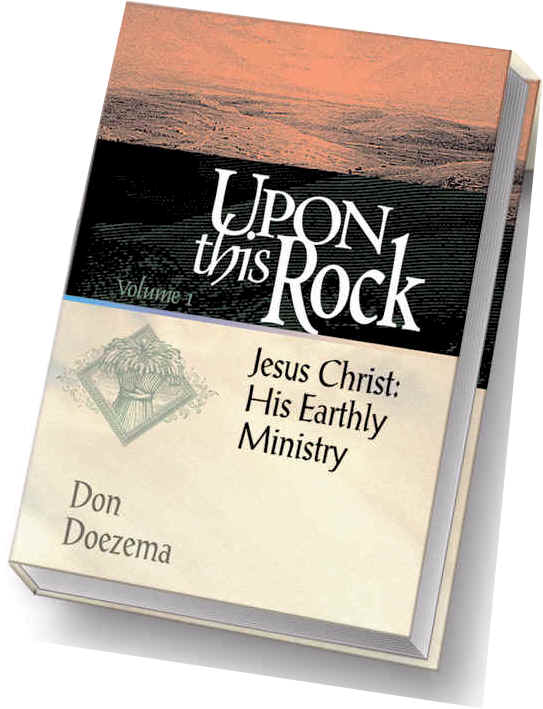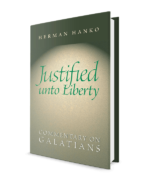The Protestant Reformed Sunday School Teachers Association has published a complete explanation of the history of the New Testament in three hardcover volumes. The set is titled Upon This Rock. Volume one treats “Jesus Christ: His Earthly Ministry;” volume two, “Jesus Christ: His Death and Resurrection;” and volume three, “Jesus Christ: His Acts Through the Apostles.” The author is long-time writer of the “Our Guide” Sunday School materials, Don Doezema. The three volumes publish in book form articles that Mr. Doezema wrote some years ago for parents to use in teaching their older children.
The books arrange the history of the New Testament in chronological order. They relate the history in simple, lively, engaging fashion. But they do more than tell the story. The books explain the history, bringing out the doctrinal and practical meaning of the historical events. One of the valuable features of the work throughout is Doezema’s apt citation of good, solid, biblical scholars, including Calvin, Edersheim, Lenski, Herman Hoeksema, Ophoff and Herman Hanko. The quotations are always brief, never tedious. In this way, the reader benefits from the insights of worthy scholars without the trouble of looking up the passages in their books or articles.
This treatment of New Testament is succinct. Each chapter, explaining a particular event or a number of related events, runs from six to eight pages. Helpful, and interesting, is the light shed on events from the history of the Old Testament and from extra-biblical sources. The explanation of the appearance of the angel to Zacharias in the temple informs the reader concerning the ceremony of burning incense (vol. 1, pp. 2-5). The treatment of Paul’s work in Corinth indicates the notorious depravity of that city—the San Francisco or Amsterdam of its day (vol. 3, pp. 266-267).
Doezema does not avoid the difficulties. Where there are legitimate differences of opinion, he gives both possibilities and leaves the issue an open question (although often stating his own judgment on the matter). An instance is the question whether the Ethiopian eunuch was literally a eunuch. Lenski says he was; Calvin says he was not. Doezema leaves “the question undecided,” but not before expressing his preference for the view of Lenski (vol. 3, pp. 101-102).
The account of Paul’s mission labours recorded in Acts, in volume 3 of the set, refers to corresponding teachings in the epistles. The treatment of the Jerusalem Council, for example, as recorded in Acts 15, calls attention to Paul’s epistle to the Galatians and the doctrinal issues in this epistle. Parents, Sunday School teachers, Christian school teachers and even ministers will find this work useful in teaching children the history of the New Testament. All will find it instructive and edifying for themselves. Each volume contains a complete textual index with passages on which chapters are based in bold print. There is also an index of subjects.
Below are some sample chapter titles:
Volume 1 Chapter 1 “The Birth of the Forerunner” (Luke 1:5-25, 57-80)
Volume 1 Chapter 29 “The King Who Walks on Water” (Matthew 14:22-33)
Volume 1 Chapter 60 “God Be Merciful” (Luke 18:9-14)
Volume 2 Chapter 2 “Mary’s Unique Faith” (John 12:1-8)
Volume 2 Chapter 25 “Gethsemane” (Matthew 26:36-46)
Volume 2 Chapter 47 “The Travelers to Emmaus” (Luke 24:13-32)
Volume 3 Chapter 6 “Peter and John Before the Council” (Acts 4:1-22)
Volume 3 Chapter 26 “Imprisoned in Philippi” (Acts 16:16-25)
Volume 3 Chapter 44 “Two Weeks in the Storm” (Acts 27:21-38)
Click here to read a review of this book by one of our readers!
“[I finished reading] Upon This Rock—I couldn’t put it down … superb story teller … brought out things I’d never thought of before … the [people who decided to produce it] did well in putting it together.” – England









